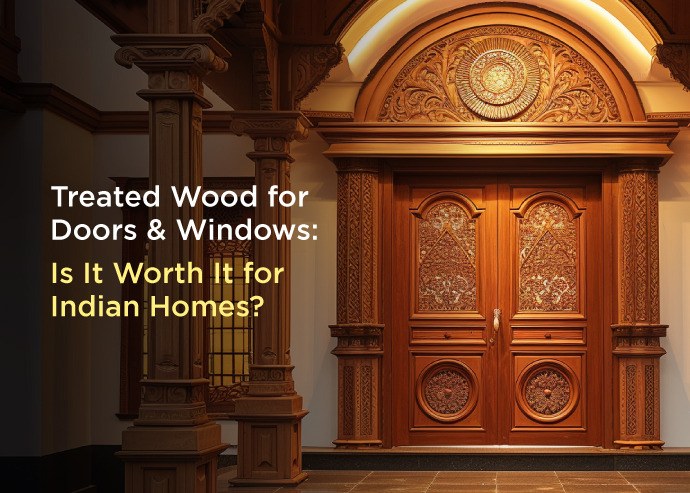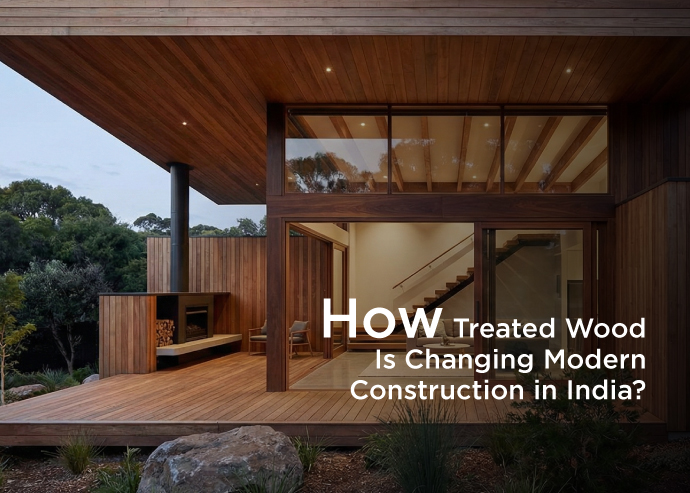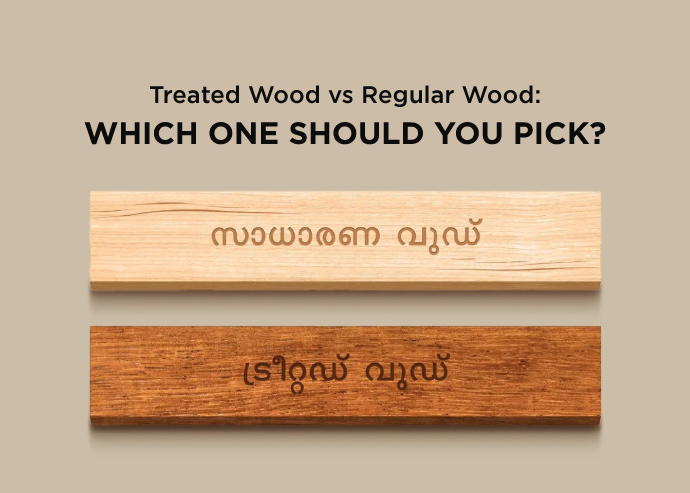Blog Details

Treated Wood vs Engineered Wood: Which One Should You Choose?
When you’re planning your next project – whether it’s a deck, furniture, or an outdoor structure – you’ll often face a key choice: treated wood vs engineered wood.
Both sound technical and both claim durability. But in reality, only one truly lasts decades, looks premium, and performs well in tough conditions. Let’s break it down in simple terms.
What is Treated Wood?
Treated wood starts as solid natural hardwood (like Merbau, Teak, or Kempas). It then goes through a treatment process that makes it resistant to termites, moisture, and decay – while keeping the natural strength and beauty of wood.
At Treet, the process goes further:
In short: Treated wood is real wood, made stronger by science.
- Air-dried and kiln-dried for stability
- Treated right to the core for lasting protection
- Guaranteed to perform for 25+ years
- Responsibly sourced from mature, certified forests
What is Engineered Wood?
Engineered wood is man-made. It’s created by pressing together wood particles, veneers, or fibers with adhesives under heat. Popular examples include:
- Plywood
- MDF (Medium Density Fiberboard)
- OSB (Oriented Strand Board)
It’s affordable and works fine for indoor uses like cabinets, wardrobes, and partitions. But it has big limitations:
- Not built for outdoor use
- Sensitive to moisture and pests
- Can’t be refinished once damaged
- Contains synthetic adhesives and chemicals
Treated Wood vs Engineered Wood – Quick Comparison
| Feature | Treated Wood (Treet) | Engineered Wood |
|---|---|---|
| Material | Solid hardwood | Compressed wood fibers |
| Outdoor Durability | High (25+ years) | Weak |
| Pest & Rot Resistance | Strong | Low |
| Appearance | Natural grain, premium look | Artificial, uniform |
| Workability | Can be cut, sanded, refinished | Limited |
| Environmental Compliance | Certified & sustainable | Varies |
| Applications | Decks, outdoor furniture, structures | Indoor panels, cabinets |
| Life Span | 25 – 40 years | 5–10 years |
| Cost | Higher upfront, but lasts longer | Cheaper upfront, costly to maintain |
Why Choose Treated Wood?
If you want:
- A premium natural look
- Strength that lasts 25+ years
- Weather and pest resistance
- A sustainable choice backed by certifications
Then treated wood is the smarter investment.
And with Treet Treated Wood, you get:
- Exotic hardwoods like Merbau, Teak, Purpleheart
- Advanced multi-stage protection
- Industry-leading warranty
- Long-term value for your project
Final Word
Engineered wood is for short-term solutions.
Treet Treated Wood is built to last generations.
If your project deserves strength, beauty, and protection – go with the option that lasts.
Choose Treated. Choose Treet.




